Data center to expand/





Sunday, March 5, 2023







Sunday, March 5, 2023

As the Colorado River reservoirs supplying a third Arizona's water supply have dropped perilously close to deadpool levels, Mesa water officials have consistently painted a rosy picture of the city’s planning, the relative health of the Salt River Project reservoirs and the years-worth of water banked by in underground aquifers.
But during unusually tough questioning in a March 2 study session, some Mesa City Council members questionned staff’s sunny outlook and requested more details about how it would respond to deep cuts.

“I think we need to be bluntly honest with our constituency about what our water situation is,” Councilman Scott Somers said.
Somers cited an internal letter issued in February by Warren Tenney, executive director of the Arizona Municipal Water Users

Mesa Public Schools spent more money in the classroom last school year than many school districts did but student passing rates in all three subjects on state assessment tests were below the statewide average.
According to a report issued last week by the state Auditor General on districts’ spending and student achievement in 2021-22, MPS devoted 72.8% of all expenditures to the classroom.


That money was spent in three ways, the report notes.
see SCHOOL page 6
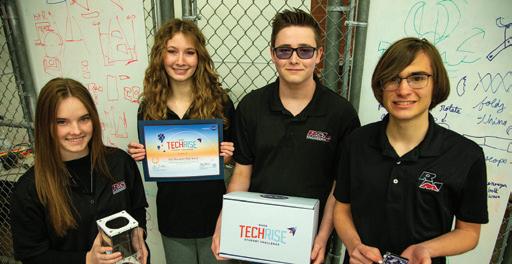

Association, to AMWUA’s board of directors warning members that “under the best-case scenario,” Arizona cities should expect a 50% reduction in their Colorado River allocations starting in 2024.
With over half of Mesa’s water coming from the Colorado River, a 50% cut would mean the loss of a quarter of Mesa's water current portfolio next year. That's three times
see WATER page 9
Mesa must decide by March 31 where to spend a $5.6 million federal grant for reducing homelessness here.
The long-standing HOME grant program from the U.S. Department of Housing and Urban Department was recently expanded by the American Rescue Plan Act to include a wider range of eligible uses, so it gives Mesa new opportunities to help unsheltered people find housing or prevent vulnerable groups from slipping into homelessness.


At public hearings the city held to gather input, nonprofit officials and volunteers offered a candid look at what people they believe is working and not working in the current system.
The question of what measures actually reduce homelessness has gained urgency amid soaring housing costs and rising drug addiction.
During last month’s annual count of unsheltered people within Mesa city limits, Mayor John Giles said “the system is broken” for keeping people out of homelessness, referring to the national crisis in general.
Even in a job market where workers are in high demand, participants identified roadblocks to employment as a
problem confounding efforts to curb the rising tide of homelessness.
In response to the question “What is most effective in reducing homelessness for those who are at risk of homelessness,” Rochelle Johns, a board member on Mesa’s Human Relations Advisory Board, wrote “Jobs are No. 1.”


Carrie Nowocin of Carry Me Productions wrote “helping people find jobs that allow for a living wage.”
Participants said many homeless or at-risk people in Mesa struggle with transportation to jobs from temporary housing.
Affordable and transitional housing should be located near public transportation, they said, or close to jobs or services like grocery stores.

One specific recommendation was to enhance public transit options in East Mesa.
Several people also listed child care support as a barrier to employment.


“Child care assistance, funding for trade certificate programs moving them from minimum wage to a living wage,” wrote Kathy Kaplan, program director with Family Promise of Greater Phoenix. “Affordable units in areas that have public transportation options.”

The high cost of housing – especially


The Mesa Tribune is published every Sunday and distributed free of charge to homes and in single-copy locations throughout the East Valley.
Times Media Group: 1900 W. Broadway Road Tempe, AZ 85282
CONTACT INFORMATION
Main number: 480-898-6500
Advertising: 480-898-6559
Circulation service: 480-898-5641


Publisher: Steve T. Strickbine
Vice President: Michael Hiatt
ADVERTISING DEPARTMENT
Senior Account Sales: Ryan Brown 480-898-6482 | rbrown@TimesLocalMedia.com
Local Advertising Sales: Chris Ross | 480-898-5649 | cross@TimesLocalMedia.com
Classifieds/Inside Sales: 480-898-6500 | classifieds@TimesLocalMedia.com
TJ Higgins 480-898-5902 | tjhiggins@TimesLocalMedia.com
Director of National Advertising: Zac Reynolds 480-898-5603 | zac@TimesLocalMedia.com
NEWS DEPARTMENT
Executive Editor: Paul Maryniak | 480-898-5631 pmaryniak@TimesLocalMedia.com
Staff Writers: Josh Ortega | 480-898-5610 jortega@TimesLocalMedia.com
Scott Shumaker | 480-898-5634 sshumaker@TimesLocalMedia.com
Sports Editor: Zach Alvira 480-898-5630 | zalvira@TimesLocalMedia.com
Get Out Editor: Christina Fuoco-Karasinski 480-641-4518 christina@TimesLocalMedia.com
Photographer: David Minton | dminton@TimesLocalMedia.com
Designer: Nathalie Proulx | nproulx@TimesLocalMedia.com
Design/Production Supervisor: Shannon Mead 480-898-5616 smead@TimesLocalMedia.com

Circulation
Circulation Director
Aaron Kolodny | aaron@TimesLocalMedia.com
Distribution Manager Brian Juhl | brian@TimesLocalMedia.com
HOMELESS from page 2
for those trying to get back on their feet – is another challenge, experts told the city.
Landlords can be pickier about which tenants they accept, for example, and move-in costs like deposits and application fees are high, they said.

Landlords also have less incentive to be accommodating and work with atrisk people, though there are some in Mesa that do, they added.
Many landlords are wary about allowing pets, accepting housing vouchers or overlooking bad credit or criminal convictions.
“People have vouchers to have housing subsidies,” said Michelle Albanese, housing and community development director for Mesa. “They can’t find a place because they’re too expensive or landlords don’t want to accept the voucher because they can get higher rents in the market.”
Meeting participants also said adaptive housing for people with disabilities
is in short supply.
Another crack in the system is the lack of support for homeless people with animals. Having pets multiplies the challenge of getting into transitional or permanent housing.
According to the National Alliance to End Homelessness, “animal companionship is fortifying and contributes to the emotional well-being of people experiencing homelessness.”
The group advocates for improving services for unsheltered people with pets, and many local stakeholders said this was a need in Mesa.
Local stakeholders say they are also seeing rising numbers of seniors falling into homelessness because they are particularly vulnerable when housing costs are high.
“We have a lot of seniors that live in mobile home units here in Mesa,” Albanese said. “The life of a mobile home is not as long as that of a stick build.”
“We might have individuals whose units are not habitable anymore, and for them to be able to move on a fixed

income, maybe Social Security, how are they going to find a place in the open market with rents being … $1,500 a month? That might be someone’s entire income,” she said.
Local volunteer Cathy Dreifort said the current public assistance system is “too restrictive, … too confusing, too complex and too frustrating for those in need.”
Dreifort and others said creating a “one-stop shop” for coordinating various types of assistance would be helpful.
“There is no real central agency for one to go to for help,” she said. “Individuals have to make numerous calls – that’s if they have a phone. They are required to show up at certain times such as 4 a.m. on certain days, only to be told no help was available on that day all while having no transportation.”
Creating a central hub is one of the goals of Mesa’s Off the Streets program as it seeks to purchase a hotel on Main
see HOMELESS page 15








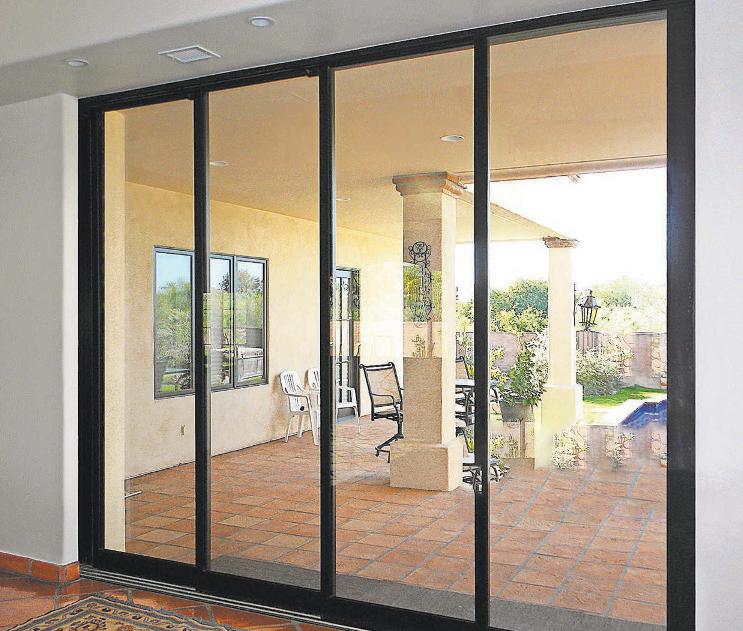







































SCHOOLS from page 1
Instruction spending comprised 56.7% of all expenditures – higher than the 56.4% spent in pandemic-challenged 2020-21.
The report defines instruction spending as the cost of “teachers, teachers’ aides, substitute teachers, graders, guest lecturers, instructional supplies and aids, field trips, athletics, co-curricular activities, and tuition.”
Student support comprised another 9.9% of the total district spending last school year. That covers the cost of “counselors, audiologists, speech pathologists, nurses, social workers, and attendance services,” according to the report.
Additionally, another 6.2% of the total budget went to instruction support, defined as “Librarians, teacher training, curriculum development, special education directors, media specialists, and instruction-related technology services. In dollars, per-pupil classroom spending increased last school year over 2020-
21 by $705 to $6,515 for instruction, $77 to $1,142 for student support and by $68 to $713 for instruction support, the report states.
In looking at state assessment test scores for last year, the report shows MPS students with a 31% passing rate for math while the statewide average was 33%.
That state average was lower than the 42% passing rate logged in 2018-19 – the last time assessment tests were administered before the two-year hiatus created by campus closures.
Mesa’s passing rate for English Language Arts last school year also was. below the state average – 38% versus 40% – while the district’s passing rate in science of 21% was below the state average of 24%.

According to the report, all three passing rates for MPS students were higher than they were in districts of a similar size, type and location (rural vs. suburban). MPS is Arizona’s largest district in terms of number of students
The report says that the Auditor Gen-


eral compares spending between comparably sized districts and the state average to “help identify opportunities for increased efficiency,” potentially freeing up more education dollars for student learning.
For non-classroom spending – covering administration, plant operations, food service and transportation – perpupil spending by MPS last school year

rose by $1,202 over the previous year.
The biggest share of that increase occurred in food service expenditures, which rose by $121 to $506 per pupil.

Broken down by meals, the report said MPS’ spending was “high” at $3.45 per meal as opposed to a state average of $3.25 and a peer district average of $3.03.
see SCHOOLS page 7

SCHOOLS from page 6

Also considered high in the report is MPS’ expenditures per square foot on plant operations at $7.70 per square foot compared to a state average of $7.21 and peer district spending of $7.23 per square foot.

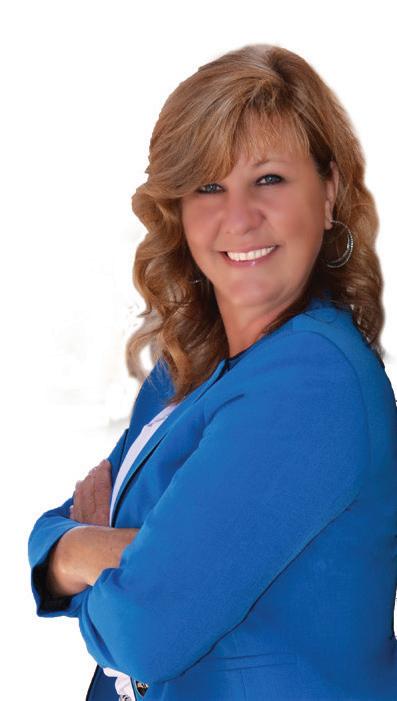
Transportation spending also was rated high. The report says MPS spent $6.36 per mile, compared to a state average of $5.53 and a peer average of $5.70.

In the 2021-2022 school year the district reduced the share of dollars going to plant operations by four-tenths of a percent, while spending on food services grew by six-tenths of a percent.
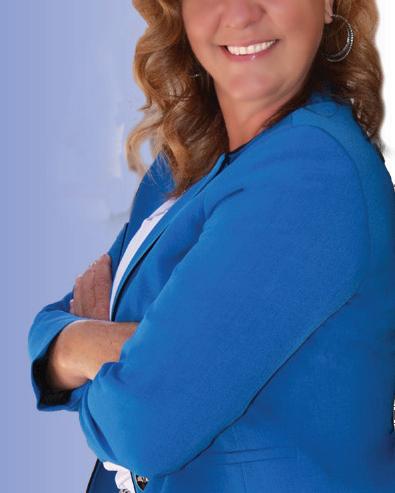
The report found Mesa’s $913 in per pupil spending on administration comparable with peer districts’ spending and lower than the state average of $1,088.
But in terms of the number of students for each administrator, MPS had far fewer than either peer districts or the state average. The report said MPS has only 59 students per administrator compared to a state average of 63 and a peer district average of 71.
State-wide, teacher salaries grew in Arizona last year, with 72% of districts increasing their average salaries last year.
The average MPS teacher salary of $66,459 in 2021-2022 crushed the state average of $58,366.
The average teacher salary in Arizona has been growing steadily since 2017, but last year MPS’ wages for teachers grew faster than the state average, 5.7% year-over-year vs. 3.5% state-wide.
MPS teachers are also more experi-

enced with an average of 13.7 years’ experience vs.11.8 years state-wide. Similarly, MPS reported a lower percentage of teachers in their first three years of teaching, 15% vs. 18% for the state.
The district’s special education population of 17% is significantly higher than the state average of 13%, and MPS’ English-learner population is 7%, just below the 8% state average.
The report also said MPS’ student population of 55,027 last school year represented a 5% decline over what it was five years earlier.

Amid drought and uncertainty on the Colorado River, the city plans to bolster its groundwater access with two new wells in southeast Mesa.
On Feb. 27, City Council signed off on a $3.4 million contract with Yellow Jacket Drilling Services for two 24-inch diameter wells, near Ellsworth and Elliot and Guadalupe and Signal Butte, respectively. Earlier it approved five drilling companies for as-needed services for well improvements and new wells up to $4 million each.


“The last decade or so was really a lot of attention on plant expansion and transmission mains and the wells largely did not have a lot of investment,” city Water Resources
Director Chris Hassert told council. “Now we’re going into a point where we have to catch up with that investment.”
City staff estimated the new southeast Mesa wells would take two to three years to complete.
The wells, about 1,000 feet in depth, will be capable of pulling large volumes of water from the underground aquifer when needed.
Many Valley cities are growing their well infrastructure with new wells or well upgrades. Some, including Mesa, have years of water banked underground that can be tapped in times of need.
Mesa has almost six years of water banked.
While cities may have bulging water bank accounts underground, in many cases the infrastructure for tapping it is limited; municipal water
systems can’t pump it as fast as they want or there is no way to move the groundwater to where it is needed most.

For Mesa city staff, the new wells are not so much about preparing for water scarcity, but for giving the southeast Mesa system “additional flexibility,” especially as demand increases with development.

Hassert said the two new wells would help the city meet surges in demand during the summer months, and also keep water flowing during planned outages of the Signal Butte water treatment plant for maintenance in the winter.
Hassert said the new wells will draw from the “enormous” East Salt River Sub-Basin.
One danger of increasing ground -



in the middle of the state.
larger than the deepest cuts contained in the Drought Contingency Plan that the Lower Colorado Basin states have been operating under during the drought.

The water group's chief also cautioned that a total loss of Arizona’s Colorado River allocation in the near future is possible either from a reservoir system crash or the courts upholding California’s senior water rights that require Arizona to take all cuts before California.
Somers asked Water Services Director Chris Hassert if Mesa was ready to lose that much water.
Hassert replied that a 40% to 50% Colorado River water cut would be “severe,” but the city could handle it.
“We put together a month-by-month operational plan for 2024 to look at how we would get by with that reduced amount of Colorado River water,” Hassert said. “We fare pretty good.”
“In fact, we don’t need to even look at anything like (using) long term storage credits,” Hassert continued.

“One of the bigger challenges is how we turn down the two treatment plants because you can’t take a treatment plant that’s treating 24 MGD (million gallons per day) and turn it down to one.”
Hassert talked at greater length about the most dire scenarios than he has at any time in the past year.
“If we get into the worst-case scenario where Lake Mead drops another 100 feet and we get to deadpool, then we’re getting into an area where we’re getting into Stage Two, Three, probably most likely Four of our water shortage plan,” Hassert said.
Management Plan calls for mandatory measures to “ensure the basic water needs for Mesa residents and businesses will be met.”
Suggested responses include a 25% surcharge on water use above a certain amount, a prohibition on winter lawns and limits on how often dealerships can wash their automobiles.

“Once we get into those really, really deeper cuts that hopefully we don’t get there, but if we do, now we’re gonna need cooperation from the community,” Hassert said.
If the Mesa’s spigot to the Colorado River is cut in half next year as Tenney warned, Hassert said Mesa would ramp up its groundwater use to its full allocation of 12,000 acre feet per year (1 AF is 325,851 gallons) from its usual 8,000 AF per year.
If there are deeper cuts than that, Hassert said, Mesa may need to escalate groundwater pumping and tap into its long-term storage credits to fill in the gap.
Mesa has banked almost six years’ worth of surplus water underground.
Hassert told the council “our wellfield is sufficient” to pump out the water needed to cover the loss of Colorado River water, but the city is currently in the process of drilling more wells.
He said the city is planning to drill about 12 more wells in the next six years, raising the number of municipal wells by a third.
Hassert’s assurances of ample groundwater were not entirely comforting to council members.
Somers worried that having to rely
on stopgaps to meet current demands would “really impact our development and our growth potential.”

Councilwoman Jenn Duff interrogated the water director about the sustainability of groundwater.
She wondered whether the aquifer could become permanently depleted if all the communities in the region started pumping more groundwater at the same time.
Hassert and Water Resources Advisor Brian Draper tried to reassure Duff that it would take a long time to deplete the aquifer.
“We do get a bit of recharge from the frontal range, say the Superstitions, you have the Goldfield Mountains, Usery (Mountains),” Draper said. “You do get some recharge there every year when it rains.”
He also said the aquifer beneath Mesa is recharged by stormwater retention ponds, and the city can pump potable water back underground if necessary.
Draper said the city has been monitoring groundwater levels in Mesa, and in
some places the aquifer has grown.
“Our strategy is always centered around pumping in a way that preserves the aquifer and doesn’t do any long term damage to the aquifer in terms of subsidence or drawing that down,” Hassert said.
In his remarks during the discussion, Mayor John Giles expressed a desire to firm up Mesa’s long-term solutions for a world where less Colorado River water is available.
Mesa has many ideas and plans in the works to get there, but they remain distant and uncertain.
“Part of this discussion reminds me of our plan to meet our climate action goals, which are … aspirational goals. We don’t know how we’re going to get there. It’s going to be new technology … I’m less comfortable with that being the plan for the water question,” Giles said.
“I can’t say to people, ‘25 years from now, we’re not going to have to just call a halt to development,’” Giles said. “That’s the doomsday scenario that we’re all planning for today.”
 BY SCOTT SHUMAKER Tribune Staff Writer
BY SCOTT SHUMAKER Tribune Staff Writer

Meta has sold 15 acres of its 396-acre campus to a neighboring data center company EdgeCore for $1.2 million.
The triangular parcel is just east of Meta’s planned 2.5-million-square-foot hyperscale data center in Eastmark, expected to start operations early next year.

The Feb. 15 sale represents a relatively small piece of Meta’s total Mesa holdings. After the sale, Meta still holds 172 acres of vacant land to the south of the first two phases of its Mesa data center.
“We didn’t need the land, so agreed to sell it to EdgeCore,” Meta spokesperson Melanie Roe said in an email.
An EdgeCore spokesperson told the Tribune that the additional acreage will be used to expand its Mesa campus into
a campus with five data centers totaling 1.1 million square feet.
Roe pointed out that the 15-acre triangle of land is separated from Meta’s data center by a road, but the land is contiguous with EdgeCore’s existing
EdgeCore plans to expand its Mesa campus into a campus with five data centers totaling 1.1 million square feet. (Special to the Tribune)
data center campus on Everton Terrace in Eastmark.
EdgeCore’s interest in growing its Mesa campus is a sign that Arizona’s data center industry has momentum despite current uncertainties over long-
term drought and the quantity of Colorado River water available to Arizona in the future.
Mesa Councilwoman Jenn Duff has
see META page 14
WELLS from page 8
water pumping in Arizona is that too many straws sucking in an aquifer can lower the water level, drying up shallower wells.
An online tool from Arizona State University’s Kyl Center for Water Policy indicates that groundwater levels in the East Salt River Sub-Basin are currently healthy.
Over the past 10 years, 47 of the 64 wells in the basin have increased in water level, and the median groundwater level has increased by 11 feet, according to the online tool.
But if all the local Arizona cities facing cuts in their Colorado River allocations start to lean more heavily on groundwater, the long-term trend in the East Salt River Sub-Basin could change.
Councilmen Mark Freeman and Scott Somers asked Hassert about groundwater testing and quality where the wells that will be dug.
“It’s pretty good quality,” Hassert said.
“The one contaminant that flirts with the threshold would be arsenic,” he continued. “The arsenic MCL (maximum contaminant level) is 10 parts per billion, and we usually see numbers that are up in the 9 or 10 range, which is OK”
Arsenic occurs naturally in groundwater in Arizona. Hassert said the groundwater would be blended with the city’s other water supplies in order to bring the level to the city’s target level for arsenic.
He also told the Tribune that the city will sample the water at different levels of the aquifer during drilling and that the city will select where in the aquifer to pull water based on its quality.
Recently, health researchers have been scrutinizing the long-
term health impacts of PFAS and PFOS, commonly called “forever chemicals,” which have been detected into groundwater across the U.S., particularly near sites of industrial activity.
Forever chemicals are used in a range of consumer and industrial products, like nonstick cookware, and are also common in firefighting foams. Firefighters have been shown to have higher levels of PFAS in their blood compared to the general population.
Freeman and Somers are both firefighters, and Somers asked staff specifically about PFAS testing.
The EPA has not set maximum limits on PFAS in drinking water, but Hassert said the EPA established a new Unregulated Contaminant Monitoring Rule in 2021 for the nation’s drinking water.
Under the new rule, Mesa will begin testing drinking water throughout the city for 25 specific PFAS compounds.
City manager Chris Brady told the council that there are existing wells in Mesa with known PFAS contamination that the city is monitoring them. He added they are in older parts of the city close to industrial areas, not southeast Mesa.
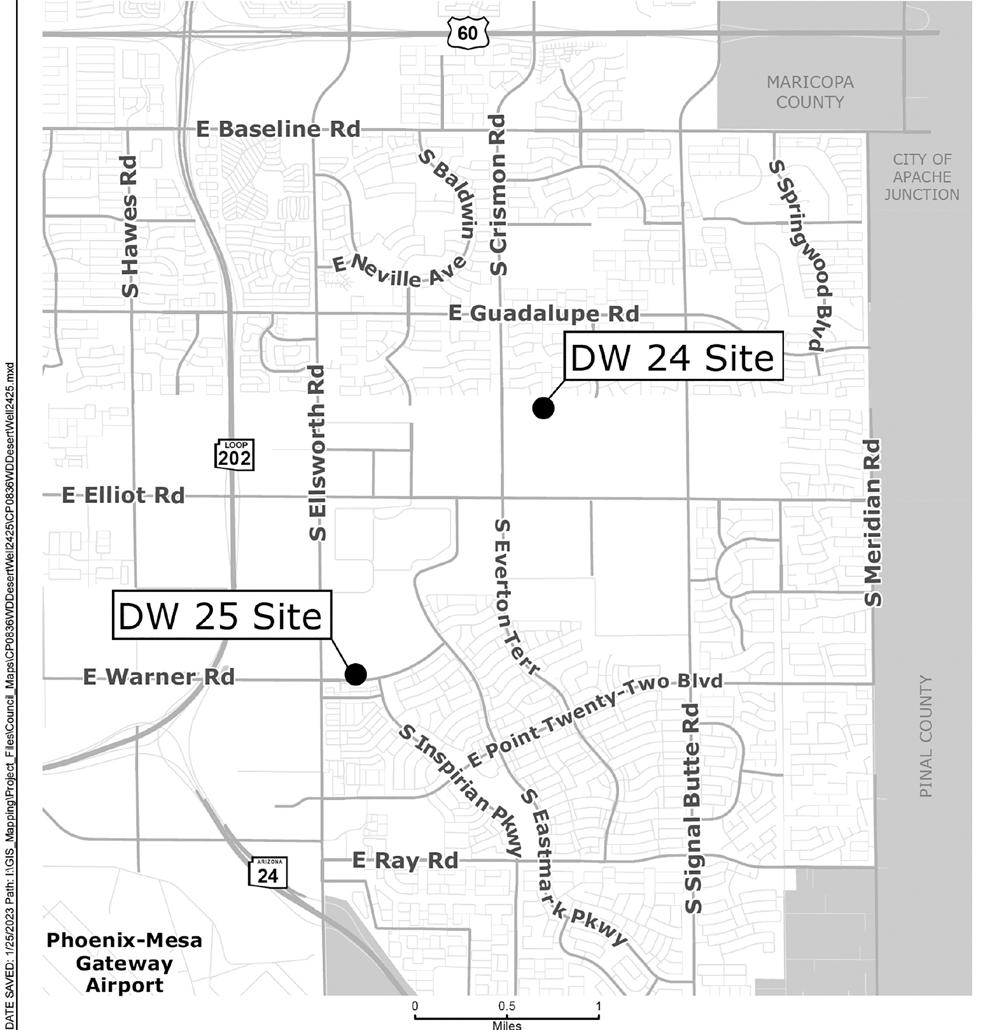
Mesa, AZ – When it comes to chronic pain and/ or neuropathy, the most common doctor-prescribed treatment is drugs like Gabapentin, Lyrica, Cymbalta, and Neurontin. The problem with antidepressants or anti-seizure medications like these is that they offer purely symptomatic relief, as opposed to targeting and treating the root of the problem. Worse, these drugs often trigger an onset of uncomfortable, painful, and sometimes harmful side effects.
The only way to effectively treat chronic pain and/or peripheral neuropathy is by targeting the source, which is the result of nerve damage owing to inadequate blood flow to the nerves in the hands and feet. This often causes weakness, numbness, balance problems. A lack of nutrients causes the nerves degenerate – an insidious
cannot survive, and thus, slowly die. This leads to those painful and frustrating consequences we were talking about earlier, like weakness, numbness, tingling, balance issues, and perhaps even a burning sensation.
The drugs your doctor might prescribe will temporarily conceal the problems, putting a “Band-Aid” over a situation that will only continue to deteriorate without further action.
Thankfully, Mesa is the birthplace of a brandnew facility that sheds new light on this pressing problem of peripheral neuropathy and chronic pain. The company is trailblazing the medical industry by replacing outdated drugs and symptomatic reprieves with an advanced machine that targets the root of the problem at hand.
1. Finding the underlying cause
2. Determining the extent of the nerve damage (above 95% nerve loss is rarely treatable)
3. The amount of treatment required for the patient’s unique condition
Aspen Medical in Mesa, AZ uses a state-of-the-art electric cell signaling systems worth $100,000.00. Th is ground-breaking treatment is engineered to achieve the following, accompanied by advanced diagnostics and a basic skin biopsy to accurately analyze results:
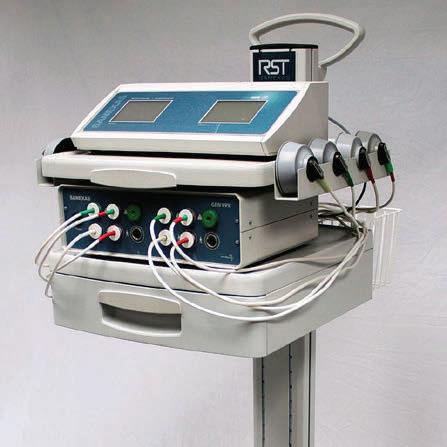
1. Increases blood flow

2. Stimulates and strengthens small fiber nerves
3. Improves brain-based pain
The treatment works by delivering energy to the affected area(s) at varying wavelengths, from low- to middle-frequency signals, while also using Amplitude Modulated (AM) and Frequency Modulated (FM) signaling
It’s completely painless!
THE GREAT NEWS IS THAT THIS TREATMENT IS COVERED BY MEDICARE, MEDICAID,AND MOST INSURANCES!!
The number of treatments required varies from patient to patient, and can only be determined following an in-depth neurological and vascular examination. As long as you have less than 95% nerve damage, there is hope!
Aspen Medical begins by analyzing the extent of the nerve damage –a complimentary service for your friends and family. Each exam comprises a detailed sensory evaluation, extensive peripheral vascular testing, and comprehensive analysis of neuropathy findings.
Aspen Medical will be offering this free chronic pain and neuropathy severity evaluation will be available until March 31st, 2023 Call (480) 274-3157 to make an appointment
Due to our very busy office schedule, we are limiting this offer to the first 10c allers YOU DO NOT HAVE TO SUFFER ANOTHER MINUTE, CALL (480) 274-3157 NOW!!
We are extremely busy, so weare unavailable, please leave a voice message and we will get back to you as soon as possible.
As displayed in figure 1 above, the nerves are surrounded by diseased, withered blood vessels. A lack of sufficient nutrients means the nerves
Effective neuropathy treatment relies on the following three factors:
Depending on your coverage, your peripheral neuropathy treatment could cost almost nothing – or be absolutely free.
Aspen Medical 4540E Baseline Rd.,Suite 119 Mesa AZ, 85206
*(480) 274-3157*
Mesa City Council unanimously approved spending $800,000 toward a $2 million study to identify a locally preferred route to extend Tempe’s new streetcar system into Mesa.

Tempe is contributing $1.2 million toward the study, which also includes preliminary design work such as lane configuration and station locations. The split is based on the route length in each city.
A staff report stated the funds would be coming from Mesa Transit Services’ current budget.
The study, called “alternatives analysis,” is the next step toward regional leaders’ vision to link Tempe hotspots like Mill Avenue with Mesa hubs like Sloan Park, Mesa Riverview, Banner Desert Medical Center and the Asian District.
Mesa Transit Services Director Jodi Sor-
rell told council the joint analysis “will not commit us to anything other than council identifying this is the corridor we want.”
Tempe’s streetcar system opened last May after 10 years of planning.
The $200 million price tag was covered by $92 million in federal funding, $13 million from a public-private partnership involving Tempe, ASU and private entities along the streetcar line, and the balance from Prop 400 regional transportation sales tax dollars.
Streetcars are smaller than light rail cars, and unlike rail cars, typically share lanes with automobiles and bikes.
Tempe’s system currently runs from Tempe Town Lake to the intersection of Dorsey and Apache Boulevard, which becomes Main Street in Mesa.
Sorrell said that Mesa has been discussing the streetcar extension almost from the start of Tempe’s project.

In 2020, Valley Metro completed a feasibility study for a Mesa extension using a fed-
eral Transit-Oriented Development grant.



The top-scored route from this study was a 4.4-mile corridor beginning at Marina Heights at Tempe Town Lake running east via Rio Salado Parkway into Mesa until hitting Dobson, then turning south on Dobson to Main Street.
The feasibility study stated there is currently no transit service along the Rio Salado corridor, but there is potential for high ridership due to planned mixed-use and multi-family developments near Rio Salado Parkway.
The Rio Salado route was added to the Regional Transportation Plan after the study, and Mesa is now calling the project the “Rio East/Dobson Streetcar Extension.”
Mesa’s new agreement with Tempe and Valley Metro Rail calls for VMR to evaluate eight route options within this corridor and also identify opportunities for federal funding.
The study is slated for completion in June 2025.

Sorrell presented evidence that there’s an appetite for enhanced public transit in the West Mesa study area.
She said the Fiesta District BUZZ circulator, a bus route launched in October connecting the Fiesta District, Asian District and Mesa Riverview, has grown in ridership each month.

see STREETCAR page 15




questioned whether data centers are an industry the city should be courting, since the ratio of permanent jobs created to energy and water resources consumed is lower than other industries.
But proponents of data centers argue that they contribute to the overall hightech economy and help attract complementary businesses.
One company that is betting on continued data center growth in Arizona is national construction firm Adolphson and Peterson Construction, which has offices in Tempe.
The company recently hired data center specialist Darian Reams to grow AP’s

national data center business and tap into a market that Reams said is “just continuing to explode.”
Reams spoke to the Tribune about his predictions for continued data center growth in Mesa and the wider region.
According to Reams, Arizona is currently No. 9 in the country for data centers, and he thinks the state is poised to crack the top 5 states for data centers in the next year.
All the headlines about drought and the Colorado River isn’t scaring off data centers, he said. Instead, the West’s water woes are pushing the industry to develop more water-efficient technology.
Water “will never deter them from Arizona,” Reams said of data center providers. The current advantages to Arizona are too enticing, and there are too many alternatives to massive water usage on the horizon.
Instead of fleeing, Reams believes data center operators will switch to emerging technologies like immersion cooling the servers packed into the centers.
Reams says operators are salivating over Arizona because of the relatively low cost of energy, affordable real estate and tax breaks the state offers data centers.
In 2021, Arizona renewed tax incentives for data centers that invest at least $50 million in data centers in Pima and Maricopa counties, or $25 million in any other counties.
And as one of the most energy-intensive building types per square foot, energy cost is huge for the industry.
“The difference of a few cents per kilo-
watt can mean millions of dollars saved in data center transactions,” EdgeCore states on its website.

Reams said the presence of mega projects like the Meta’s Mesa data center also creates momentum for the region.
“What you tend to see is once a big hyperscaler like Meta comes in there, you start to see all these other co-locations – smaller data centers start populating to that area,” he said.
The magnetic draw from big projects is bearing out in the Elliot Road Tech Corridor, which could also be called Data Center Alley.
There are at least seven data centers currently built or planned along Elliot Road in Mesa.
Reams sees data centers as a growing industry. A person creating a TikTok, browsing the internet or interacting with a network-enabled device is generating data in the cloud, and all that data needs to be stored somewhere.
“Big data is not going away,” Reams said. “You look at how virtual reality, artificial intelligence, all that stuff is just on the verge of just exploding even more. It just takes that much more of these data centers to house that stuff.”
Mesa residents Dalia Diaz and Shannon Poppell were among three Mesa Community College students recently honored for what the college called “extraordinary accomplishments and distinguished leadership.”
MCC President Dr. Tammy Robinson said Diaz, Poppell and Charis Hayward “are each remarkable in their chosen fields and I believe they have phenomenal careers ahead of them.”
In all, 59 students from 19 community colleges across Arizona were honored as members of the 2023 All-Arizona Academic Team.
Each student is working toward an associate’s degree, maintains a GPA of 3.5 or higher and is involved in campus and community volunteer activities, the college said.
Diaz plans to transfer to Arizona State University to earn a bachelor’s in communication/communication arts. Her goal is to work in political communications.
Poppell plans to transfer to ASU to earn a bachelor’s followed by a master’s in industrial/organizational psychology. As part of her career path, she would like to teach psychology courses at a community college. remain connected to the community.
Her college and community activities include PTK Omicron Beta Chapter Honor Society president and vice president and
alumni relations officer, Net Impact chapter president, AmeriCorps alumni and Census 2020/redistricting ambassador.
Popell is a 2022-2023 Newman Civic Fellow, PTK Distinguished Chapter Officer Award and a recipient of the Maricopa County Community College District Chancellor’s Civic Leadership Medallion and MCC Summit Leadership Award.
All-Arizona Academic Teams are judged in three rounds. First-round judges consist of local businesses and civic, education and government leaders. T

he second and third round judging occurs in Washington, D.C. by representatives from federal agencies and national education associations. Scores from the national competition determine each state team’s rankings.
First team members each receive a $1,000 scholarship, second team members are each awarded a $750 scholarship and third team members each get a $500 scholarship from their respective community college. Team rankings are anticipated later this spring.
All-Arizona Academic Team members are also eligible to be selected as one of 20 named to the All-USA Community College Academic Team, receiving an additional $5,000 scholarship, medallion, obelisk and certificate during the American Association of Community Colleges annual convention scheduled April 1-4 in Denver, Colorado.
STREETCAR from page 12
In just four months, Sorrell told the council, the Fiesta BUZZ’s ridership has risen to the level of the Downtown BUZZ, a more established route.


“That bodes very well for the future,” Sorrell said.

The project may face hurdles getting beyond the study phase.
Tempe and Mesa will be angling for federal dollars, but as with Tempe’s first phase of the streetcar system, regional transportation dollars will likely be needed in the funding mix.
With the Prop 400 transportation tax set to expire at the end of 2025, regional funding for a Tempe-Mesa streetcar is in jeopardy.
Last year, former Gov. Doug Ducey vetoed a bill calling an election to ask voters for a 25-year extension of the Prop 400 sales tax.
The current Republican leadership in the Legislature – which must vote to put a tax extension on the ballot – has said it will only do so if mass transit funding is forbidden.
A Prop 400 extension bill sponsored by
Sen. David Farnsworth (R-Mesa) would have renewed the tax for 20 years but prohibited communities from spending the money generated on commuter rail, light rail, street cars or trollies.
In Farnworth’s extension bill, 95% of the transportation dollars would have to go to roads and the rest for buses and dial-aride services.
Mayor John Giles, who led the development of the Maricopa Association of Governments’ current master transportation plan, staunchly opposes a Prop 400 renewal with such limitations.
The Senate Transportation and Technology Committee voted down Farnsworth’s modified bill Feb. 13.
Vice Mayor Francisco Heredia, who represents Mesa on the Valley Metro Board of Directors, said the expansion of Mekong Plaza in the Asian District showed the importance of Prop 400 funding for public transit.
“We need to further enhance our transportation system to connect more people to areas like this, that we are working so hard to invest in as a destination,” Heredia said.
HOMELESS from page 4
Street for its emergency shelter program.
Many local service providers also emphasized the importance of advocates or case managers to help homeless people navigate the system.
Albanese called these “wraparound services,” and she said they are one of Mesa’s top three priorities for combating homelessness.
She and others said that addressing the lack of attainable housing and shelter in the region would cost a lot more than $5.6 million to address.
Several people in the meetings wished for more aggressive action to set up temporary shelter.
“Can anything be done to repurpose the vast amounts of empty structures and barren lots?” one participant wondered. “Maybe owners of land and buildings can be incentivized to create community spaces and housing.”
Dreifort also wants to see underutilized spaces converted into temporary shelter.
Albanese was optimistic that the $5.6 million grant, when “leveraged” with other funds to fill in gaps in service, could have an impact.
“I believe it’s possible to make a difference,” she said.
But Albanese and Mesa’s Deputy Director of Community Services Lindsey Balinkie are also open-eyed about the deeper issues hampering efforts to end homelessness.
“We just see, like fentanyl use, skyrocketing,” Balinkie said, “and it’s deeply impacting whether or not people are willing to receive or can even think about and be capable of receiving services.”
The mental health and substance abuse treatment system is not adequate to handle the current demand, Albanese said.
“There’s really, I think, a gap there,” she added. “Unless you can get folks that are willing to participate in those programs, and it’s easy access and there’s follow up and there’s consistency with it, that is a huge problem.”
reader poll is designed to let YOU tell us about your favorite people, places, shops, restaurants and things to do in Mesa.
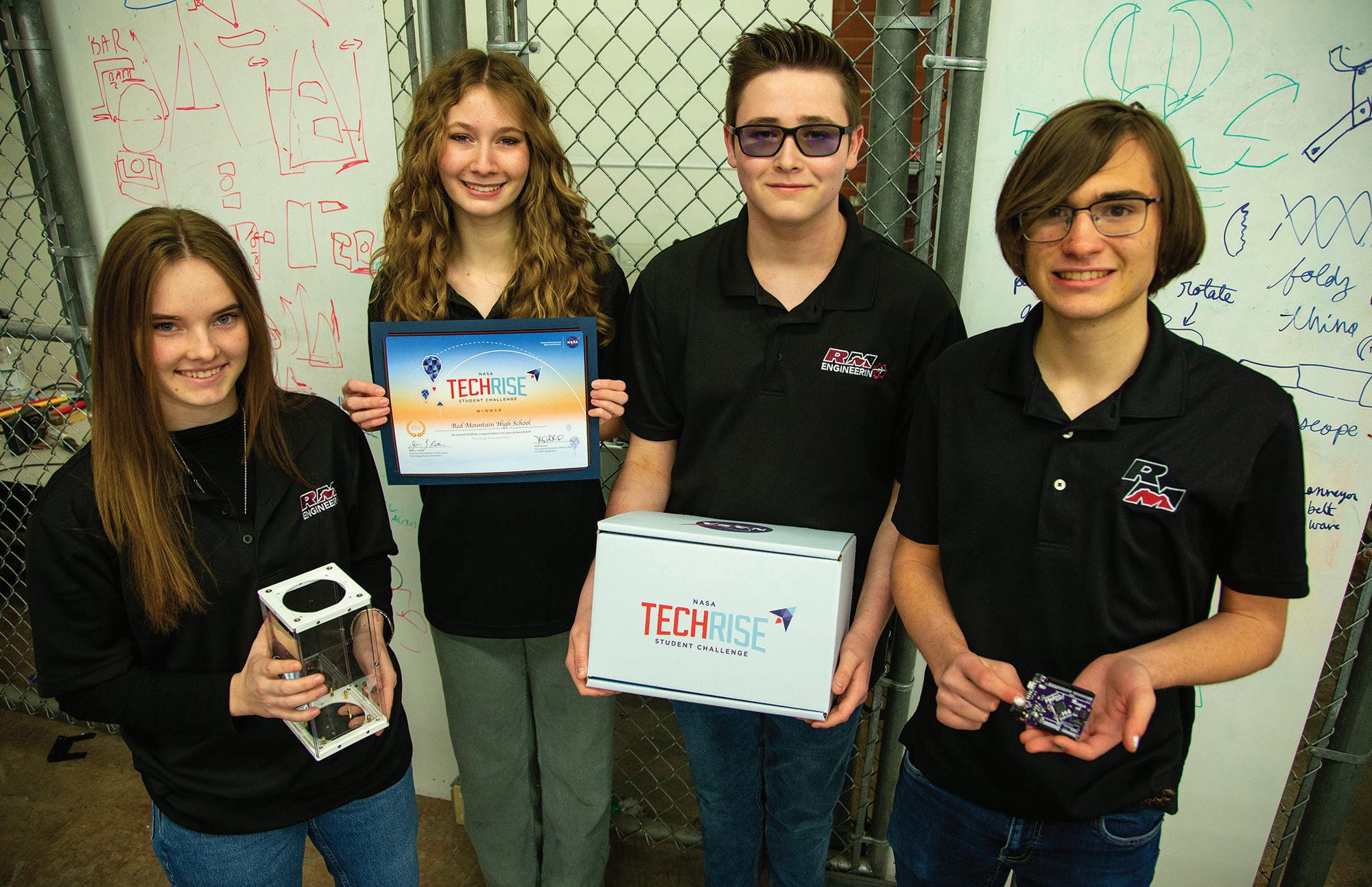 BY JOSH ORTEGA Tribune Staff Writer
BY JOSH ORTEGA Tribune Staff Writer
Astudent team from Red Mountain High School will see their scientific ingenuity fly high this summer after winning NASA contest.
NASA selected 60 winning teams in the TechRise Student Challenge, a nationwide contest designed to engage students in hands-on STEM experience, giving them the opportunity to test their innovative solutions for space exploration and the study of Earth via a high-altitude flight test.
Red Mountain High School engineering students who won the challenge include sophomore Kearan Gibbs and juniors Tayah Day, Jonathan Coon and Zephyr Proffitt.
The Red Mountain High School team got $1,500 to build out a flight box with technical support from Future Engineers and an assigned spot to test it on one of two NASA-sponsored high-altitude balloon flights scheduled for this summer.
NASA Administrator Bill Nelson said , “Through opportunities like the TechRise Student Challenge, young people are deepening their passion in science and technology, preparing to be the future innovators and pioneers who help humanity soar to new heights and unlock more secrets of the universe.
Approximately 275 volunteer experts in engineering, space, and Earth science reviewed and evaluated written proposals for originality of their idea, its impact on education and/or society, feasibility and the quality of the build plan.
The four Red Mountain students were led by teacher Adam Middleton and will work through the remainder of the school year building out their experiment, titled “Alternative Ultraviolet Effects from Non-OzoneDepleting Pollutants.”
With the support of a professional engineer, they will look at where there is a relationship between pollutants and UV rays in the ozone layer and whether they inhibit radiation
from reaching the Earth’s surface.


Eight years ago, Middleton transferred to Red Mountain High School with the intent of working with the engineering program.
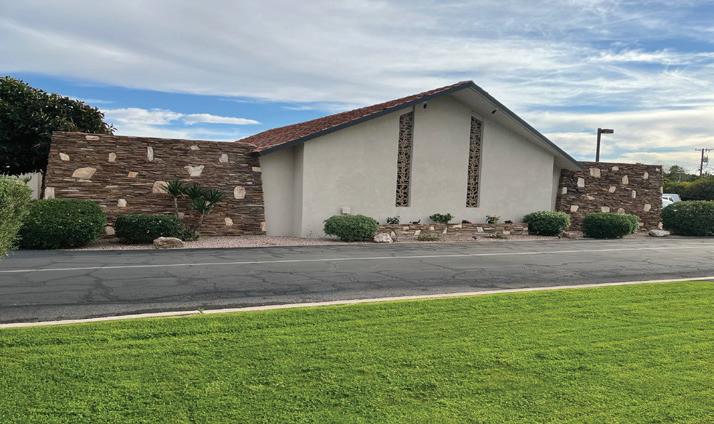
He said the school has built a fouryear pathway that helps students understand the world through a design mindset.
“Our philosophy from the beginning has been we really want to build problem solvers,” Middleton said. “We want to build kids who are ready to move out into the world.”
Red Mountain junior Jonathan Coon said his great-grandfather’s work as a chemical engineer piqued his interest in engineering.
“I basically started from scratch,” Coon said. “We do a wide variety of things that helped prepare us for this.”



Inspired in part by her father’s work as an engineer, junior Tayah Day said she took an interest in the field since seventh grade and became involved in extracurriculars like woodworking and the Engineering Club at Red Mountain.
“But our teacher Mr. Middleton’s the one that showed us this project and says, ‘you guys have to do this,’” Tayah said.
Tayah said Red Mountain’s STEM programs offers plenty of career samplings, including a robotics program.
“I love this program,” she said. “I feel like it provides a lot of opportunities just to get involved.”
Opportunities like this come in handy for students like sophomore Kearan Gibbs, who has aspired for a career in aerospace since childhood and has her eyes set on attending the Massachusetts Institute of Technology.
“And so, I’m trying to get involved with as many things as possible, so that I can achieve that,” Kearan said.


She said it felt “pretty surreal” to find out they won the NASA challenge – a baptism-by-fire for the only sophomore in the group.
With his older brother helping the school win the school’s first NASA
challenge a few years ago, junior Zephyr Proffitt said he also has an interest in a variety of STEM fields and that the school’s program helps him to try out as many as possible.
“Whenever NASA does a challenge, we’re on it,” Zephyr said. “The Red Mountain engineering department is on it almost immediately; StellarXplorers, we were on it almost immediately.”
He said everything they study in the program builds up to the fourthyear engineering design and development class.
“That class is 100% just about a project that you work on with a group to make an actual change and to help real people in the world,” Jonathan added.
On flight day this summer, the students’ experiments will be tested via a high-altitude balloon flight from one of two commercial providers: Aerostar of Sioux Falls, South Dakota, or World View in Tucson.
The payloads will gather data as the balloons ascend to approximately 70,000 feet, where they will float for at least four hours, and get exposed to the unique atmospheric conditions in the stratosphere that cannot be replicated in ground tests.
The payloads also will observe the surface below them and collect data on land features such as vegetation, crops, urban centers, and bodies of water.

With more than 13 years teaching primarily physics, Middleton said he enjoys projects like this and the many others he finds for the kids because it expands on what they learn in the classroom.
“We’re really proud of what we do, but we’re proud of our kids, and that’s why we try to put them out there as much as we can, because the work that’s happening here is not high school work on most campuses,” Middleton said.
“The stuff that these kids are doing is well beyond what most high school students are getting opportunities to do or taking up the challenge to do even while they’re in high school setting.”

480-898-6465


Deadline: Wednesday by 5pm for Sunday
Chestine Lange passed away February 19, 2023, at Hospice of the Valley in Mesa, Az., with her son Randy at her side.
Chestine was born Sept. 22, 1933, in Stephens Creek, TX. She was a bank manager for Colorado National Bank as well as a wonderful wife to Dean E. Lange for 48 years. She was the treasurer for her local POW group, which her late husband, Dean, belonged to, having been shot down over France in WWII. Chestine and Dean loved to dance at the American Legion Apache Post 27 and attended Our Savior Lutheran Church.
Chestine is predeceased by her husband Dean E. Lange, her parents Minnie Lee Bailes and Ernest James Bailes Sr., her brother Ernest James Bailes Jr., sister Dorothy Bailes Farmer, and daughter Julie Anne Brander Hudson

She is survived by her son Randy Brander and Stepdaughter Naomi Simmons (Yonge), grandchildren Lange Simmons, Joshua Simmons, Kenneth Williams Jr., Paul Linn Jr., Heather Linn, and their families.
A memorial service will be held at a later date.

Since

Iveda Solutions, a Mesa artificial intelligence video surveillance company, started in a 250-square-foot office at Alma School Road and Southern Avenue in 2003 with a couple employees.
Today, its shares are traded on the NASDAQ stock exchange and it has ambitions to become a billion-dollar company leading the charge toward “smart cities.”
CEO David Ly said that despite being wooed by other Valley communities to relocate over its 20 years of growth, Iveda has “stayed loyal” to Mesa.
So Mesa remains the company’s base as it plots a major expansion, hiring engineers and signing contracts to deploy products across the globe, with clients in Taiwan and Latin America among its most recent new customers.
Iveda hopes to ride a rising wave of interest in artificial intelligence and solve problems in law enforcement, health care, city management and business.
Ly said when he was starting out in 2003, the company was bringing surveillance systems into the 21st century by upgrading them from VHS tape recorders to cameras linked to networks and cloud storage.
Suddenly, businesses could monitor their properties from anywhere in the world and keep footage longer. Twenty years ago, this was cutting edge.
Ly was well-versed in the latest technology because he worked for a San Jose-based wireless company before starting Iveda.
He was successful as a sales manager and relocated to Phoenix to take a leadership role.
But soon after he arrived, Ly said, the parent company started layoffs, which eventually included his job.
A natural choice might have been to move back to tech-heavy San Jose, but Ly saw opportunity in Arizona.
“I made the decision that, ‘You know what? This is new,’” Ly said of the state. “The opportunity for us to build technology here. It was just pure excitement and enthusiasm for actually starting over.”
As the technology for analyzing and utilizing video footage evolved, Iveda has kept pace with developments right into the AI age.
Many Iveda products use smart technology, allowing a police body camera to not just record a scene, but actively help an officer spot things in real time.
AI can also automatically analyze footage from hundreds of cameras, like those at Mesa’s Real Time Crime Center, so a handful of humans can monitor a vast network of cameras.
Algorithms can detect weapons or abnormal behavior in the footage and alert a human.
In January, Iveda signed a deal with a city in Taiwan to deploy its Utilis Smart Poles.
Utilis Poles are light street lights on steroids. Besides a light, the poles have video, environmental sensors, wireless antennas and even a drone charging station.
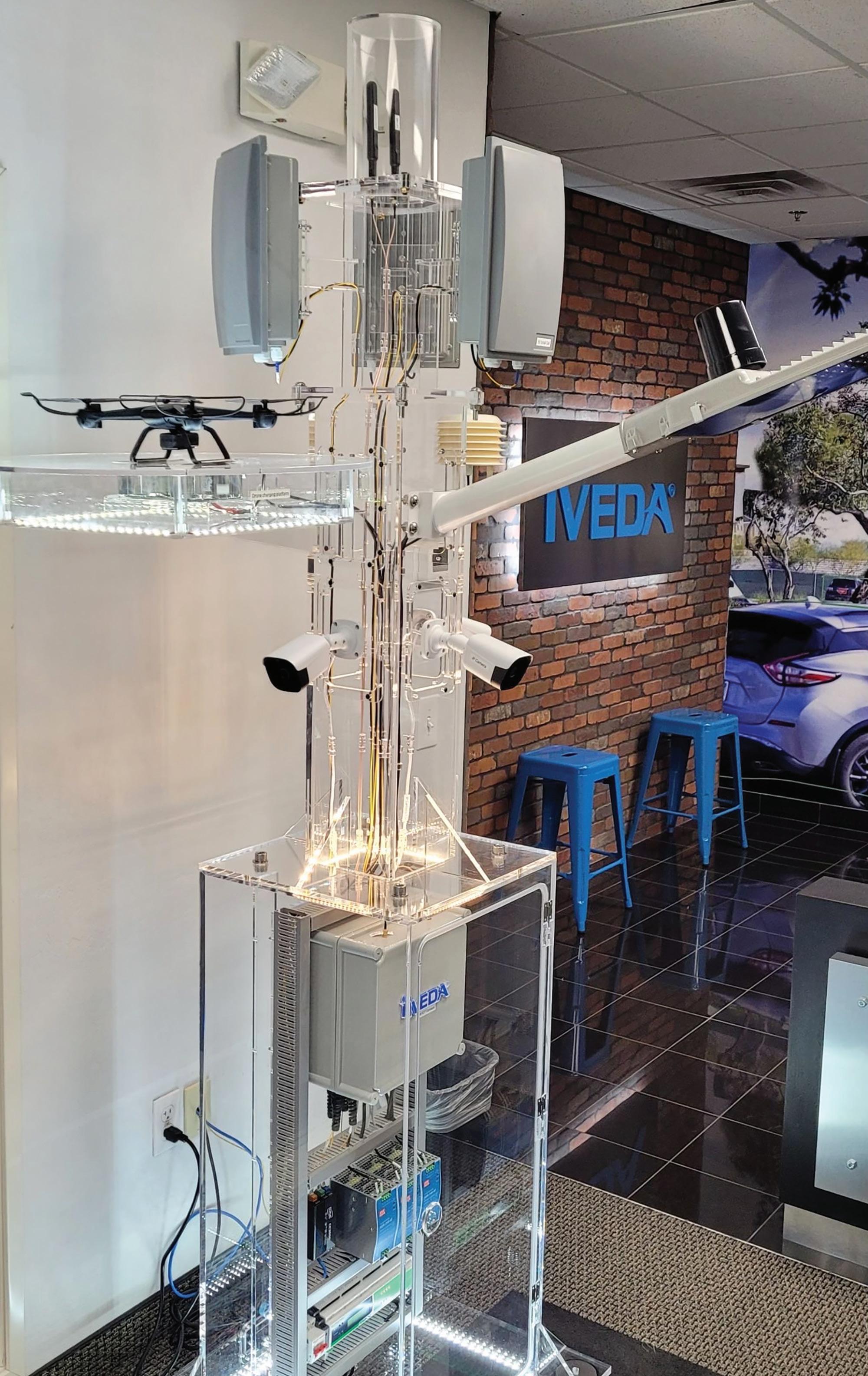
According to the company, deploying the poles throughout the Taiwanese city will help it “solve a myriad of urban challenges, from improving parking and traffic management and charging electric vehicles, to detecting and notifying officials about street flooding.”
page 20
18-Month IRA CD 1
DIVERSIFY YOUR RETIREMENT WITH AN IRA CD.
3.25%
36-Month IRA CD 1


3.50%
Federally insured by NCUA.
1 Traditional and Roth. Consult your tax advisor about IRA eligibility, contributions, qualifications, and early withdrawal penalties. Annual Percentage Yield (s) accurate as of March 5, 2023. Certificates earn dividends. Subject to approval. Certain restrictions may apply. Traditional and Roth IRA rates are variable and subject to change. Early withdrawal penalties may apply. Early withdrawals, fees, and other conditions could reduce the earnings on the account. Credit union membership required. Promotion subject to change. Accounts federally insured to at least $250,000 by the National Credit Union Administration.
Ly believes that making existing cameras and other hardware like street lights smarter has enormous growth potential.
“Think about the world – how many cameras are in existence today?” Ly said. “Iveda has built technology that in less than two seconds can enable any of those functional cameras … to gain intelligence to help us detect, alert and provide more efficiency throughout our operations, whether we’re a 7-Eleven, a laundry mat or an international airport.”
Ly said he sees artificial intelligence as the “next wave” in the tech industry.
“In the next five to 10 years, it’s all about AI and automation,” Ly predicted.
“Like you and I were jumping on the iPhone wave of cloud from 2008 to 2014 … when every company put ‘cloud’ in front or behind their name and became something special. Well today, if you put AI within your com-
pany name, you can tag along the bandwagon of AI.”

Ly says Iveda is not a newcomer to the technology and believes it is in a good position to bring AI into realworld applications.
Mesa has made headlines by luring Fortune 500 companies to the city, but an even higher distinction for a community may be nurturing small businesses into giant status, which Iveda hopes to attain.
Iveda is one of several Mesa-born companies that has seen success, like Auer Precision, Edupoint, Atlis Motors and Backyard Taco, to name a few.
Ly said a factor in staying in Mesa was that one of the company’s first customers and investors was Mesa businessman Joe Farnsworth of the real estate and home-building Farnsworth family.
Farnsworth was not a tech guy, but Iveda’s technology intrigued him after it helped solve burglary issues at properties he managed in 2003.
“I hired David to come out and use
the old technology,” Farnsworth said. “When that happened, we caught the thieves and kind of shut down the guys that had been hitting us at our RV parks.”
The power of the cloud cameras appealed to Farnsworth, as well as the entrepreneur behind them, and he decided to become an angel investor.
“I could tell (David) was just a young, hardworking hustler, and I mean that in a good way,” Farnsworth said.
Farnsworth, who currently serves on Iveda’s board, also brought international business experience to the company, having opened a real estate office in Taiwan in the 1990s that brokered millions in transactions.
After 20 years backing Iveda, the technology continues to impress Farnsworth.
“As I sit and listen, I’m astonished at what we can do,” he said.
Farnsworth appreciates the good the technology can do in protecting people and property, but he also worries about abuse of surveillance technol-
ogy.
Bad actors in authoritarian governments could use technology to track political dissidents, for example.
Iveda’s AI Video Search technology has been certified by the Department of Homeland Security as Qualified Anti-Terrorism Technology, which grants the company liability protection under the SAFETY Act.
“Given the higher intelligence of the technology, there is a two way street: The technology will help you monitor any misuse,” Ly said. “The technology will tattletale on you.”
Ly said that one of the hardest calls he had to make as CEO is whether to take the company public or not.
Being a publicly traded company is “a double-edged sword.”
It opens Iveda up to millions of new investors, which helps generate capital to grow, but that comes with new obligations and makes the company answerable to a broader audience.
“The choice was, let’s do this. You want to be global? Do it right,” Ly said.
Being over 45 years of age is a new stage in life—it’s the age of ‘reality’ or practicality. At some point we’ve had to deal with the horrible human truth that we’re not immortal, that our health isn’t on autopilot. Whether we have an ongoing condition or we suspect that there might be an issue on the horizon, we have questions, we need answers from someone. Question is, who is that someone?

At 2:30 a.m. Feb. 15, Maureen
Salloom arrived at Mayo Clinic in north Scottsdale perfectly healthy. The 42-year-old came by choice, of sound mind and body, on a mission: For a surgeon to make small incisions in her lower abdomen and left side to extract one healthy kidney.
The organ was rushed to a jet bound for Wisconsin. There, another surgeon implanted the kidney into someone Salloom will never, ever know. Not even his or her name.
Which is precisely what makes this story of epic generosity so worth telling.
“I don’t want to know anything about them,” Salloom says. “I didn’t do it for
that reason. … I just hope it works. That they’re healthy and they live however much longer they’re supposed to live in their life. But I don’t need to know anything about that.”
Whoever said ignorance is bliss, I doubt they had this level of benevolence in mind.
For Salloom, the daughter of immigrants from Mexico and Jordan, kindness has always been her thing, dating back to grade school in Texas. She was the first kid to volunteer, class president, the girl voted friendliest. She gets it from her mom and dad, Olga and Ray.
“My parents have always been so grateful to live in this country, to have our freedoms, to have a job,” says Salloom.
“They have this overwhelming sense of gratitude towards life. They definitely in-
stilled that in me and my brother.”
Salloom, a Phoenix resident, moved here in 1999 to attend Arizona State. A career in nonprofits followed.
Seven years ago, working at Phoenix Children’s Hospital, she learned about kidney disease. Salloom planned events and camp programs for kids, and saw them return every second day for dialysis. Cancer got more attention, but chronic kidney disease seemed to her more grinding and equally awful.
Around that time Maureen married Brad Whitley, a Tempe firefighter. She was a touch envious of Brad’s career treating emergencies, saving lives. Last August, she sat her husband down and unveiled her idea: She intended to donate a kidney to a stranger. To save a life herself.
Says Whitley: “I think it took me a little bit to realize that she was serious. I was very fearful.”
Whitley spoke to Tempe Fire Chief Greg Ruiz, whose wife Adrian had donated a kidney to their son. Reassured Maureen wouldn’t die in surgery, Brad embraced the idea “full speed ahead.” He went to most of Maureen’s 30 or so pre-surgery appointments, perpetually beaming with pride.
Eventually, Maureen told him to stop with the praise.
“I was like, stop telling people,” she recalls. “I’m not doing this for attention. I just want to do it to help someone. Period.”
Whitley laughs. “I’m probably never
At a more carefree time in American History—actually, just a few years ago— “Sports Illustrated” featured a tongue-in-cheek digest of offbeat stories under the heading “Signs the Apocalypse is upon us.”
For many readers, that periodical’s very own Apocalypse came in 2020, when the magazine morphed into a monthly publication.
In November of that same year, it was reported that Joe Biden was elected as our 46th President.
Perhaps it is more curiosity than coincidence, but signs and wonders—or more accurately, “signs that make you wonder”—have proliferated during the Biden Presidency.
A trio of recent news items provides intriguing examples. Though not all of them directly involve Joe Biden, they have happened “on his watch,” which undoubtedly has been punctuated by plenty of presidential naps.
Biden Cites Franklin—Not Benjamin, but Aretha
Rather than invoking the memory of a Founding Father, Ol’ Joe’s misfiring memory prompted him to recall a catchy tune from the “Queen of Soul.” Attempting to mount a rhetorical defense of his oft-criticized absence from the disaster site in East Palestine, Ohio, the chief executive stumbled into a verbal quagmire.
Quoth the commander-in-chief, when asked about a possible visit to eastern Ohio:“ At this point, I’m not. I did a whole video, I mean, what the hell on…”
A reporter quickly intervened, asking
“Zoom?”
“Zoom! All I can think of every time I think of Zoom is that song in my generation, ‘Who’s Zoomin’ Who,’” responded the Leader of the Free World.
Mayor Pete’s tenure at Transportation
Once considered a rising star for the Dems, current Transportation Secretary and former South Bend (Indiana) Mayor Pete Buttigieg has seen his political prospects dim drastically, given that his grasp of sound public policy is tenuous.
So intent were the progressive personnel experts on pursuing their definition of “diversity” for the Biden Cabinet, that they ignored the sobriquet South Bend residents had adopted for their ex-mayor: “Pothole Pete.” Not a great nickname for a transportation secretary.
Identity politics and an overhyped intellect combined to propel leftist hopes
sky-high for Buttigieg. But a stalled international supply line, severe holiday airline delays, and several aircraft nearmisses brought those great expectations crashing to earth.
And then came his visit to East Palestine, Ohio – 20 days after the train wreck.
The term “train wreck” aptly applied to the secretary’s excursion. Residents and authorities got a good look at Buttigieg’s sour facial expression, earning him a new nickname: ”Pouting Pete.”
When faced with the enormity of a major train derailment and ensuing chemical spill, the novelty of a gay adoptive father possessing the musical prowess of a concert pianist mattered not a whit.
He had trouble speaking English, muttering this unfortunate pun at a press
HAYWORTH from page 21
conference: “I lost my train of thought.”
New presidential priority: “Putting Ukraine First”
Short-term memory loss isn’t just for the octogenarian occupant at 1600 Pennsylvania Avenue.
White House strategists believe it likewise affects the American population at large—though not through collective aging. Instead, it arrives via “information overload.”
With a news cycle seemingly updated by the nanosecond, it’s impossible for John and Jane Q. Public to keep pace. Adding to the confusion is the reality of our leader “being of two minds”—bellicose toward Russia, benevolent to Ukraine—and relying at home on his muscle memory of “Medi-scare” to blame political opponents – all while spending as if there’s no tomorrow.
On Feb. 17—ten days after accusing Republicans of plans to raid Social Security and Medicare—and three days before his surprise visit to Ukraine, Biden
promised propping up similar programs “over there” with American tax dollars: “It’s gonna allow pensions and social support to be paid to the Ukrainian People, so they have something…something in their pockets.”
Yep, from our pockets to theirs…with even more in the pockets of Ukraine’s leader?
“Last call?”
Meantime, “Bidenflation” has taken buying power away from family bud-
LEIBOWITZ from page 21
going to stop telling people what she did. To me as a firefighter, that’s what we’re supposed to do. For her to do this on her own? There’s no comparison.”
Two weeks post-surgery, Salloom is up and at ‘em again. She walked three and a half miles yesterday; she has a follow-up at Mayo next week.
The hospital will monitor her for the next two years. The only thing she can’t do going forward is take ibuprofen. Oth-

gets in the United States; Ol’ Joe’s Pentagon “Brain Trust” is more concerned with protecting gender-fluid pronouns than responding effectively to Chinese provocations; and “homeland security” has become as oxymoronic as “jumbo shrimp.”
So put down your old copy of “Sports Illustrated,” pick up your headphones and listen to Barry McGuire’s 1965 hit, “Eve of Destruction.” Sounds as if the Apocalypse is upon us.
erwise, she can eat, drink, and jog to heart’s content. In time, her remaining kidney will grow larger to compensate for the kidney she gave away.
I can’t imagine it ever growing as big as her heart.
“I’m not going to say it wasn’t painful, it wasn’t emotional,” says Salloom. “Every emotion you could feel, I felt it. But now I feel so good. … That person’s life has changed. I’m so happy, so grateful for them. That I could make a difference. That’s just huge.
ANSWERS TO PUZZLES AND SUDOKU from Page 27


From the negativity of watching a wildfire torch the Arizona backcountry, Don Peters brought a sense of positivity in naming the Arizona Wildfire Baseball Club, and along with it the constructive life lessons he’s taught to the boys that can apply on and off the field.
While MLB players just reported to Spring Training, Peters’ boys haven’t stopped playing since last August. Originally started in 2004, Wildfire Baseball has since caught some new wind and grown since reforming in 2021. Both coaches said they’ve seen immense growth in the popularity of the familiar “club ball” team that went from one team of 12 kids, to five teams with more than 60.
Although Peters initially wanted to play the game vicariously through the kids, Wildfire Baseball has become about teaching self-reliance and responsibility that goes beyond baseball, and not just acting as a “feeder”—a team that focuses on funneling talent to a next-level organization like high school or college.

“I want to be on the field, I wasn’t done with baseball,” Peters said. “It’s all about
teaching them responsibility and taking care of your business.”
Cardis, a former ballplayer as a kid in the Junior Pan-American games and in college at the University of Wisconsin-Milwaukee, along with the rest of the coaching staff brings years of life lessons, including former big leaguer Kelly Stinnett with 14 years in the Majors and Don Peters, a member of Team USA Baseball in 1989 and 26th overall draft pick in 1990 by the Oakland Athletics, Cardis said they also focus heavily on character development.
“We wanted to make sure that translated to these kids in the East Valley,” Cardis said. “But we also wanted the opportunity to focus on how we do those things from a character development standpoint, mental aspects of the game that were really important things for us as players.”
After 12 years of coaching Saguaro High School baseball to two state championships, as well as enjoying watching his own son play high school ball and go off to college, Peters said he wanted to restart the club and five years ago met Phil Cardis and his Lions Baseball Club.
Now, both men run the year-round baseball club whose season starts in August and runs through the following July, and steps
up the intensity from Little League for both players and families.
On top of practicing up to two hours a day twice per week, Cardis said each of the five teams participates in about two weekend tournaments a month.
Except in the summer when its pared down to one tournament month, Cardis said they work to get players out of the heat of the Valley to venues in California and Colorado.
Cardis, former president of Red Mountain Little League, said organizations like this stage in player development stands crucial for those who want to become serious competitors in high school and beyond.
Former players such as Brett Nicholas, who Peters recalls playing shortstop on the first 14-and-under team, eventually went on to a Major League career playing catcher for two seasons with the Texas Rangers.
Along with the players, families also work just as hard off the field as the players do on it and joining in that journey makes you a part of the “Wildfire family.”
On January 21, the Wildfire 13-and-under team played in a local United States Specialty Sports Association baseball tournament at Cactus Yards in Gilbert.
The tournament had nearly all the makings the professional level of competition these kids aspire to, complete with walk-up songs for each player, the only thing missing was the large scoreboard in centerfield in use and a larger crowd screaming with every run scored.
Perhaps Lucas Clements walk-up song— Ice Cube’s “It Was a Good Day” served as motivation for the team to pull off the 7-5 win against 212 International, another 13-and-under team from Mesa.
Lito Talbert’s son Tristan has played on the Wildfire going on two seasons now and said this “developmental team” is the next step for instilling the mechanics of the game to make it all muscle memory.
But unlike other similar organizations, it’s more than a “money grab” and the commit-
ment the families put into it makes it worthwhile, and Tristan is one of many players on the team continuing to work hard, improving and thriving on and off the field.
Talbert said his son has played for only the last two years since the family moved down here from Anchorage, Alaska, and he already sees an improvement “leaps and bounds” from where he started.
“I would say he is the ballplayer he is today because of the organization,” Lito said.
That’s a good sign as Tristan readies himself to move from eighth grade on to the next level of competition to play ball at Red Mountain High School.

“I think these organizations are a good thing for the boys so you can learn the game,” Talbert said. “You know, if this is what they want to do, this is kind of where they need to be.”
For more info...
Visit: www.facebook.com/AZwildfirebaseballclub.
Call: (608) 239-3302
Email: admin@azwildfirebaseballclub.com
Take one step into the Festival Village of Fairhaven, and you’ll get whisked away to 16th century Europe for a medieval adventure full of jousting knights, sea fairies and circus performers. One of the largest renaissance festivals in the nation, the annual Arizona Renaissance Festival & Artisan Marketplace returns for its 35th year with old and new amusements and antics.
With a cast of nearly 2,000 costumed characters roaming a 50-acre festival village, guests can immerse themselves in the Middle Ages with an artisan marketplace, whimsical circus, people-powered rides and games, jousting tournaments and nonstop theater performances.

From 10 a.m. to 6 p.m. every Saturday and Sunday through April 2, festival goers

of all ages can revel in the village’s many festivities at the foothills of the Superstition Mountains on U.S. 60.
“We have a festival that’s always been
in one place, one spot, for going on threeand-a-half decades now, and people count on that and make it a tradition to come see us,” said Jerome Hill, the festival’s promo-
tions coordinator and the King of the Fools. He called the fest’s 35th year a testament to its standing power as an attraction here.
In commemoration of that anniversary, each weekend will have a special theme. Throughout March, the event will celebrate pirates and BrewFest, wizardry and magical creatures, the art of theater, Celtic culture and artist appreciation before the Fool’s Masquerade Final Huzzah on closing weekend, April 1 and 2.
“One thing that I really like about the Renaissance Festival is that it always has been, and is always just going to be like a full-family outing – families with kids or people that just want to come on their own. There’s sort of an all-ages appeal to it,” said Grayson Coleman-Shelby, a performer.
A focal point is the festival artisan mar-
see RENAISSANCE page 25

The East Valley Harmonizers Barbershop Chorus is known for offering its members’ services for special Valentine’s Day greetings but on Saturday, they’ll be gathering for a concert with a “live radio broadcast” of love songs.
The chorus’ annual spring concert will be held 2-3:30 p.m. Saturday, March 11, at Westwood High School, 945 W. Rio Salado Pkwy, Mesa.
The show, titled “Love is ON the Air!,” presents a 1960’s-era radio show, with the MC cast as a popular DJ who is hosting a special make-believe program.
“These love songs are timeless classics from yesteryear – and the year
before that!” said show chairman Terry Morrison. “These songs will all be sung in four-part barbershop har-
mony and represent the authentic arrangements of the Barbershop Harmony Society.

Also on the card is a special performance from High Priority, the 2016 Barbershop Harmony Society Seniors division champion quartet known for “their tight harmonies and tasteful humor.”
The Mesa-based barbershop singers have been singing love songs since they organized in 1993.
The East Valley Harmonizers are an all-male chorus chapter of the Barbershop Harmony Society, an international non-profit organization founded in 1938 with over 20,000 members. For more information about the chorus and the upcoming Spring Show, visit the website at evbarbershop.com.
Tickets are $20 for adults and available at evbarbershop.eventbrite.com or by calling 770-715-3375.
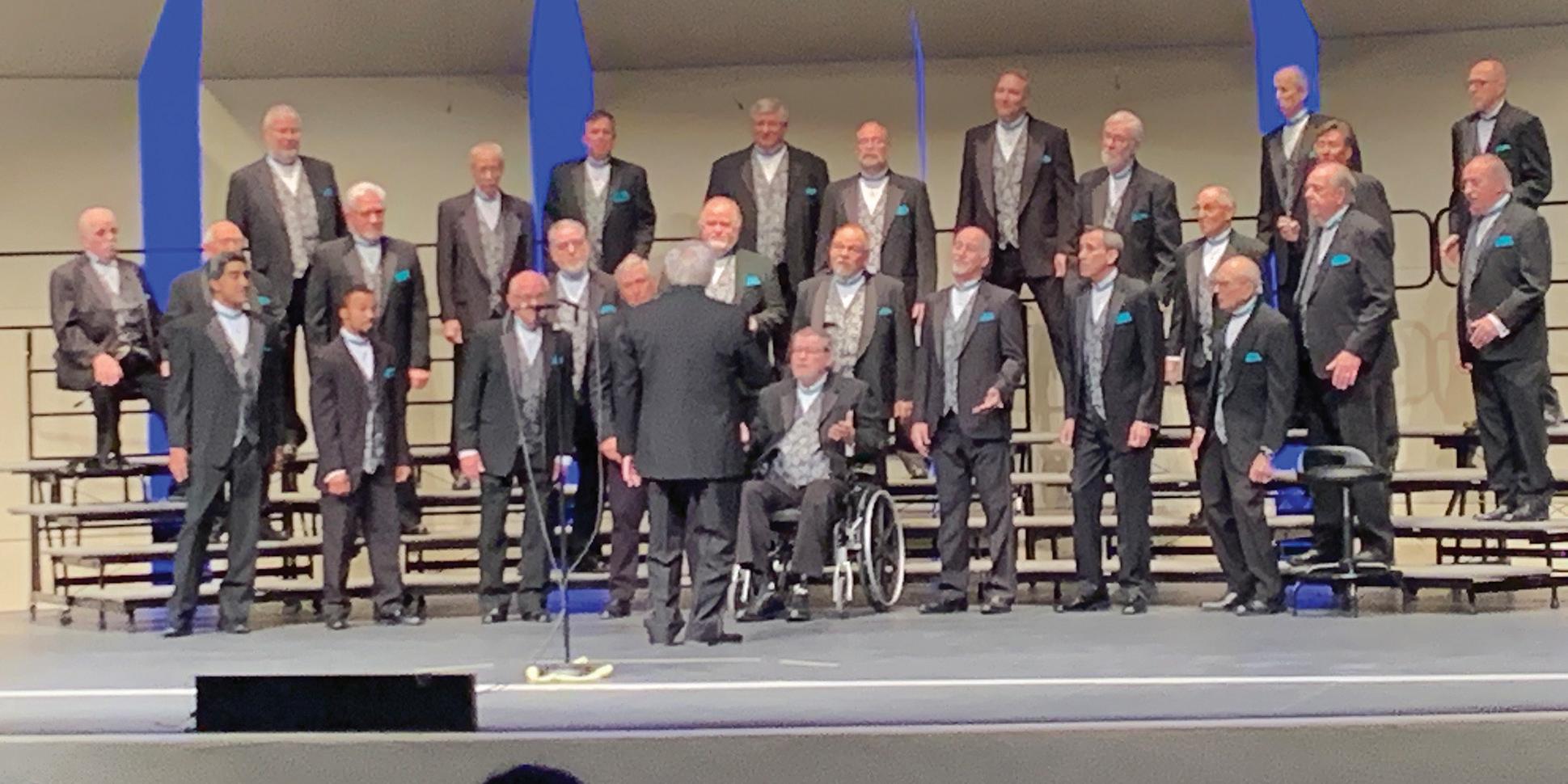
ketplace, an elaborately adorned open-air collection of storybook shops, studios and galleries.
Over 200 talented artisans offer handmade wares fitting all budgets, ranging from pottery, to clothing, to home decor. Some even perform demonstrations right in front of festival goers, creating timehonored crafts like glassblowing, blacksmithing, woodcarving and coin stamping.

“A lot of the merchants have the same goods they’ve been making and selling themselves for years,” Coleman-Shelby said.
The marketplace also features a spread of cuisine and beverages.
At the village’s many food stalls, visitors can feast their way through turkey legs, shepherd’s pie, soup bread bowls, funnel cakes, steaks-on-a-stick and a variety of meads.
The Piazza Pub is a new addition, serving mixed charcuterie boards and a selection of wine and beer in a cozy courtyard setting. Transylvanian Treats is also new this year and offers custom-made Europe-
an chimney cakes that have received rave reviews.

“Spend time investigating all the different food stalls, you might find stuff you didn’t know we had here,” Hill hints.
The pinnacle of the festival’s culinary experience, however, is The Pleasure Feast, held by Captain Rook and his fearsome, rascally pirates. During a 90-minute fivecourse meal with beverages at the Old Manor Hall, the pirate crew provides surprise entertainment complete with upbeat music.
Tickets for the feast are $100, and include a souvenir limited-edition toasting goblet. Seating is limited with only two events a day at noon and 2:30 p.m.

The village comes to life with entertainment, which includes three competitive jousting tournaments a day, and interactive games and people-powered rides like giant rocking horses, paintball battles and climbing towers.


There is also a 16-stage theater presenting endless comedy, music and swordplay.
One of this year’s new additions is The Renaissance Men, a thrilling sword-fight-
ing comedy show. Coleman-Shelby and Daniel Christopher, who play the characters Rowland and Florian, battle it out for the audience’s validation and the title of The Renaissance Man.
“It’s family-friendly, because we want to be able to have people of all ages be able to watch the show,” Coleman-Shelby said. “It’s high energy, it’s high excitement.”
The Renaissance Festival’s team is always working on new attractions to give guests the opportunity for a fresh new experience, while bringing back beloved favorites.
“You can come here probably the entire weekend and still not really explore everything. It takes a really long time to really get into the nooks and crannies of everything that festival has to offer,” Coleman-Shelby said. “That’s one of the really cool things, an attraction that’s always evolving and appealing to a broader audience base.”
Whether one has visited the Renaissance Festival once or a dozen times, they are always able to transport to another time and place and leave their troubles at the gate for a little while.
“You get to have this fun, immersive experience, and that just sticks with you for a long time,” Coleman-Shelby said. “A lot of people find that it’s a yearly thing that they almost need every year just to get through (something), and we help them with that.”
The jousters, mermaids and pirates look forward to sweeping you away on a medieval escapade to the Festival Village of Fairhaven.
Arizona Renaissance Festival
When: 10 a.m. to 6 p.m. Saturdays and Sundays through April 2

Where: Arizona Renaissance Festival grounds, 12601 E. U.S. Highway 60, Gold Canyon















Cost: Tickets start at $33 for adults, $21 for children ages 5 to 12. Children ages 4 and under are free. Discounts are available at the box office for military and seniors 60 and older. Parking is free.


Info: 520-463-2600, arizona.renfestinfo.com


The stakes are high when a chorus girl from Allentown, Pennsylvanian, gets a chance to become a Broadway star in the Hale Centre Theatre’s new musical, “42nd Street.”
The Gilbert theater’s show through April 1 “recalls the classic days of Broadway and the golden age of movie musicals with lots of sensational tap numbers and lavish costumes,” a spokesman said.
Songs such as “You’re Getting To Be a Habit With Me,” “We’re In The Money” and “Shuffle Off To Buffalo” are among the popular numbers in the musical.
Hale favorite Rochelle Barton stars as a Broadway diva while the humbler Pennsylvania chorus girl is portrayed by Brie Wadsworth-Gates. Brandt
Norris plays a young male lead gifted with incredible dancing while Jere Van Patten and Kathleen Richards play the writers of the Broadway show-within-a-show.

Brandon Zale stars as the demanding Broadway director. The ensemble is filled with Hale veterans as well as newcomers.
“42nd Street” plays at Hale Centre Theatre, 50 W. Page Avenue, Gilbert, Wednesday through Saturday nights, with Saturday matinees and select Friday matinees.
Dr. Cathy Hauan is the music director, with multi-ariZoni Award winner Cambrian James as the director and choreographer.
Tickets are $45 to $48 for adults and $30 for youth ages 5-17. Tickets may be obtained by calling Hale’s Box Office at 480-497-1181 or HaleTheatreArizona. com.

50
51
52
54

 With JAN D’ATRI GetOut Contributor
With JAN D’ATRI GetOut Contributor
Growing up Italian, homemade meatballs were a dinner staple enjoyed over pasta, in a sub roll or as savory appetizers before the main meal.
But last week, while teaching a cooking class on Greek foods, I had to set my Italian roots aside and absolutely drool over Greek meatballs known as soutzoukakia.

These morsels of magic have a wonderful combination of spices like cumin, cinnamon and oregano with a red sauce that completely enrobes them with even more flavor. Greek meatballs are delicious with seasoned orzo, rice or, dare I say, on a bed of Italian pasta?
Ingredients:
3 slices whole wheat bread, toasted to a mediumbrown
1/2 cup whole milk
12 oz. lean ground beef
12 oz. ground pork
2 TBSP butter
1 large sweet yellow onion, chopped fine
3 garlic cloves, minced
2 large eggs
2 tsp ground cumin
1/2 tsp ground cinnamon
1/2 tsp dried oregano
1/2 cup fresh parsley, chopped fine
1 tsp salt
1 tsp pepper
1/8 tsp red pepper flakes
Extra virgin olive oil, to grease the baking dish
Red Sauce
1 TBSP olive oil
2 TBSP butter
1 medium yellow onion, finely chopped
2 garlic cloves, minced
1/2 cup dry red wine
2 (15 oz.) cans tomato sauce
1 bay leaf
3/4 tsp ground cumin
1/2 tsp cinnamon
1/2 tsp sugar
1 tsp salt
1 tsp pepper
Directions:
1. In a bowl, place the toasted bread and cover with milk to soak. When bread is soft, squeeze the liquid out completely and discard remaining milk. Transfer bread to a large mixing bowl.
2. In a medium skillet over medium high heat, add butter, onions and garlic. Sauté until soft and caramelized, about 8 minutes. Set aside to cool.
3. To the bowl with soaked bread, add the beef, pork, eggs, cumin, cinnamon, oregano, parsley, salt, pepper, red pepper flakes and cooked onion and garlic mixture. Gently mix to combine. Refrigerate for 20 minutes.
4. Preheat oven to 400°F. Make the sauce.
5. In a skillet over medium heat, add 1 tablespoon of olive oil, 2 tablespoons of butter. Add onions and cook for 3 minutes or so. Add garlic and cook for another 2 minutes, stirring regularly.
6. Add the red wine and cook to reduce by about half. Add the tomato sauce, bay leaf, cumin, cinnamon and sugar. Bring to a boil, then lower heat and simmer for 15 minutes. Turn off heat, add salt and pepper and stir to combine.
7. Prepare a large baking dish and lightly oil the bottom with virgin olive oil.
8. Wet your hands and scoop portions of about 2 ½ tablespoons of the meat mixture and form into large 16 elongated football-shaped meatballs. (Arrange meatballs in the baking dish and top with the sauce (bay leaf removed.)

9. Place the baking dish on the middle rack of your heated oven. Bake for 40 to 45 minutes or until the meatballs are well cooked through (check part-way through to make sure sauce is not dry. If needed, add a little bit of water to the bottom of the baking dish.)
11. Remove the meatballs from oven and add another drizzle of EVOO. Garnish with parsley and serve over orzo or rice. Makes 16 meatballs.
IN THE MATTER OF THE ESTATE OF JOY DENISE WIEDEBUSH
Deceased, 06PRO23-000007
NOTICE TO CREDITORS AND NOTICE OF INFORMAL PROBATE AND APPOINTMENT OF PERSONAL REPRESENTATIVE
Notice is hereby given that on February 1, 2023, Kent Steven Marquardt, whose address is 2314 Crystal Avenue SE, Aberdeen, SD 57401, was appointed as Personal Representative of the estate of JOY DENISE WIEDEBUSH.
Creditors of decedent must file their claims within four months after the date of the first publication of this notice or their claims may be barred.
Claims may be filed with the Personal Representa tive or may be filed with the Clerk of Courts and a copy of the claim mailed to the Personal Representa tive.
Dated this 6th day of February, 2023.
Kent Steven Marquardt 2314 Crystal Avenue SE Aberdeen, SD 57401 605-377-3052
Marla Zastrow Brown County Clerk of Courts 100 1st Avenue SE Aberdeen, SD 57401 (605) 626-2451
Christopher A. Haar Attorney at Law PO Box 1181 Aberdeen, SD 57402 605-228-7552
chrishaarlaw@gmail.com
Published in East Valley Tribune Feb 19, 26, Mar 5, 2023
Arizona Department of Real Estate (ADRE) Real Estate Recovery Fund
www.azre.gov
Judgment Debtor Notice (RF-109)
100 N. 15th Ave., Suite 201 PHOENIX, Al 85007
TO: (Print names of all Judgment Debtors)
1) JENNIFER MOUNTJOY-ZWISLER
2) PRIME TIME PROPERTIES MANAGEMENT and REAL ESTATE INC. ADB as Prime Time Properties Inc.
Based on a judgment against you in favor of 1)
RAILCASTLE LLC 2) RAM RIVER LLC being made to the Arizona Department of Real Estate for
payment from the Real Estate Recovery Fund. If payment is made from the Recovery Fund, all licenses and license rights that you have under Arizona real estate law will be automatically terminated on the date of payment and may only be reinstated pursuant to A.R.S. § 32-213l(A)(3), on a showing that:
1. The Recovery Fund has been reimbursed for the amount paid plus interest at the current legal rate;
2. The underlying judgment has been fully satisfied; and
3. You have filed an original application for a license. If you wish to contest payment from the Recovery Fund, you must file a detailed written response to Applications. The Real Estate Commissioner must receive your response at the address below within 35 calendar days after the date this notice is mailed, delivered or first published. You must also send a copy of the response to the Claimant at the address below. If you fail to respond as required, you waive your right to present your objections to payment, and you will not be entitled to notice of any action taken or proposed to be taken by the Commissioner with respect to the claim. A.R.S. § 32-2188.0l(C)
Applicant’s Name(s): Brad Blair President Railcastle LLC and Ram River LLC
Attorney’s Name/Firm (if applicable):
Applicant’s Address: 11931 138 Ave City, State, Zip: Edmonton Alberta Canada T5X 4K1
Telephone and Fax: tel 780 456 8170 Email: blair1960@vahoo.com
NOTE:
The response must include sufficient information and references to documents to fully explain the basis for opposing the allegations contained in the application. Mail or submit via Message Center your response, supporting documents and a copy of this Notice to: RF-109 Rev. 03/18
Recovery Fund Administrator Arizona Department of Real Estate 100 N. 15th Ave., Suite 201 Phoenix, AZ 85007
Published in East Valley Tribune Mar 5, 12, 2023
IN THE SUPERIOR COURT OF THE STATE OF ARIZONA IN AND FOR THE COUNTY OF MARICOPA Family Court Administration
Date: Wednesday, February ll, 2023
Case Number: FC2008-00730 I
Patricia M Hurtado vs. Jesse G Hurtado
ORDER TO APPEAR Regarding Petition for Enforcement of Support
NOTICE: THIS IS AN IMPORTANT COURT ORDER THAT AFFECTS YOUR RIGHTS. READ THIS ORDER CAREFULLY. IF YOU DO NOT UNDERSTAND THIS ORDER, CONTACT AN ATTORNEY FOR LEGAL ADVICE.
AVISO: LA QUE SIGUE ES UNA ORDEN
JUDICIAL JMPORTANTE QUE AFECTA SUS DERECHOS. LEALA CUIDADOSAMBNTE. SI
NO ENFENDE ESTA ORDEN, ASESORESE CON UN ABOGADO.**
Based upon the “Petition for Enforcement” and pursuant to Arizona law, IT IS ORDERED that Petitioner and Respondent and counsel, if represented, appear in person and attend a conference with a conference officer and a subsequent evidentiary hearing at the time and place, stated below.
CHECK IN LOCATION: Superior Court of Arizona Maricopa County Family Court Administration Southeast Regional Court Complex 222 E. Javelina Ave. Suite 1300 Mesa, AZ 85210-6234
DATE AND TIME: Thursday, March 30, 2023 at 9:15 AM
Published in East Valley Tribune Mar 5, 2023
NOTICE OF SALE OF MOBILE HOME
NOTICE IS HEREBY GIVEN that the following item of personal property will be sold at public sale to the highest bidder, to satisfy a landlord’s lien: Mobile Home
Make: REMBRANDTS
Body Style: 12 X 44 MH
Model Year: 1969
VIN: R44T2CFBRB23954 or R44T2CFBR
Date and Time of Sale: 04/05/2023 10:00 AM
Location of Sale: Space No. 175 HOLIDAY VILLAGE
701 S DOBSON ROAD MESA, AZ 85202
Name of landlord: HOLIDAY MHC, LP DBA HOLIDAY VILLAGE
Amount of Claimed Lien: $2,919.17 as of December 28, 2022
The Landlord reserves the right to bid at said sale and if its bid is the highest, to purchase said mobile home.
The Landlord claims a lien against this property in the amount shown above as of the date shown above, for rents and other charges which have accrued through that date under a rental agreement covering the space occupied by the mobile home. The rental agreement giving rise to this lien was entered into by the Landlord and the following parties, owners of the mobile home, as tenants: Date of Rental Agreement: 09/08/2020
Name(s) of Tenant(s): Robert Britt Moore III & Jennifer Ann Moore
Owner of Record: Unknown
Said mobile home is located at the address shown above as the location of sale.
The above described property shall be offered for sale pursuant to A.R.S. 33-1023. The proceeds from the sale will be applied to the cost of sale and to the lien, and any money that remains will be disposed of as provided in A.R.S. 33-1023.
HOLIDAY MHC, LP DBA HOLIDAY VILLAGE By: Cecilia A. Prendergast Title AdministratorDated: February 21, 2023
Published in East Valley Tribune Feb 26, Mar 5, 2023
NOTICE IS HEREBY GIVEN that the undersigned intends to sell the personal property described below to enforce a lien imposed on said property pursuant to the Arizona Self-Service Storage Act, Arizona Statutes 33-1704, Section H, Enforcement of Lien. The Undersigned will sell at public sale by competitive bidding on or after March 24, 2023 at 9:00am using an online auction at www.storagetreasures. com, said property has been stored and located at US60 Self Storage, 1661 S Alma School Rd, Ste 105, Mesa, AZ 85210. Property to be sold as follows: Misc. household goods, personal items, furniture, clothing, toys and/or business fixtures and items belonging to the following:
Bradley Reynolds 124
Logan Shankel 817
Keith Morris 347
Stacy Koury 417
Nicole Stewart 209
Sky Eriacho 331
Keith Morris 346
Sale subject to cancellation in the event of settlement between owner and obligated party. Items sold “as is”, CASH ONLY, and Buyer must pay a security deposit and broom sweep/clean the unit. Go to www.storagetreasures.com to bid on unit(s).
Published in East Valley Tribune Mar 5, 12, 2023
PUBLIC NOTICE
Notice to Creditors
Estate of JOANNE VASQUEZ, deceased 11/22/2022
Maricopa County, Arizona Case No. PB-2023-00 0281
All persons who have claims against the above named Estate are required to present them to the Personal Representative on or before 5/25/2023.
Personal Representative:
Heather Lalley 6540 S. Agate Way
Chandler, AZ 85249
Published in East Valley Tribune Feb 26, Mar 5, 12, 2023
In the Matter of the
Estate of Daniel Dean Richard
NOTICE IS HEREBY GIVEN that Thomas Arndt has been appointed as the Personal Representative of this estate. All persons having claims against the estate are required to present their claims within four (4) months after the date of the first publication of this Notice or the claims will be forever barred. Claims must be presented by delivering or mailing a written statement of the claim to Thomas Arndt, Personal Representative of Daniel Dean Richard, 2606 N Yucca ST, Chandler, AZ 85224
Published in East Valley Tribune Feb 19, 26, Mar 5, 2023
Call Roy 602-810-2179




European, Classic & Exotic Sports cars...(All Models) Any Condition!




PORSCHE • 1948 thru 1998 • 365 Coupes, Roadsters, 911, 912, 993, Turbos, Etc.


CPA Global North America, LLC seeks Senior Software Engineer in Chandler, AZ to review and triage of new technical support tickets. 100% telecom. permitted w/n the U.S. Apply at https://www.jobpostingtoday.com/
Ref: 48743
CORVETTES
Corvettes
1952-1972
Impalas
1959-1964
Mustangs
1964-1973
Camaros
1967-1969
Chevelles
Yard Sale
MERCEDES • 1940 thru 1970 • 190SL, 230SL, 280SL, Early Cabriolets

1964-1972



Broncos/Blazers IMPALA
March 11, 7 am-3 pm, 2-family yard sale @ 5919 E Evergreen St, Mesa 85205. (Brown and Recker Rd). Counter bar stools, ceiling fans, office table, computer monitor, lots of household and kitchen items, framed artworks, etc.


JAGUARS • 1930 thru 1970 • XK,XKE, Coupes, Roadsters, Early Cabriolets
Do You Have or Know of a Classic Car?


Finder’s Fee Paid! Cash Buyer



ALL PROJECTS! Running or Not!
Roy 602-810-2179 / Kellyutaz@msn.com
SOFTWARE DEVELOPERS: Phoenix, AZ & various unanticipated locations throughout the U S : Invlv in gather rqmts, anlys, dsgn & dvlpmnt Dsgn & d v l p v a r a b s t r a c t c l a s s e s , i n t e r f a c e s , c l a s s e s t o c o nstruct the buss logic using C# Net & VB Net Dvlp & e n h a n c e w e b f o r m s , m a s t e r p a g e s , u s e r & c u s t o m c o n t r o l s b y u s i n g H T M L & C S S . C r e a t e & d v l p s t o r e d p r o c e d u r e s , t r i g g e r s & v i e w s i n S Q L S e r v e r I m p l m n t O O P c n c p t s i n C # & A S P N e t D p l y w e b svcs using Soap & XML Prfm unit & integrn test & f i x d e f e c t s M a s t e r ’ s i n S c i , T e c h , B u s s A d m i n , o r E n g g ( A n y ) i s r e q ’ d M a i l r e s u m e t o 4 P e a k s B u s iness Solution LLC, 1345 E Chandler Blvd , Bld 2, Ste 107, Phoenix, AZ 85048



Clarivate Analytics (US) LLC seeks Director of Market Access Client Operations in Chandler, AZ. Manage day-to-day business operations, incl delegating responsibilities & working w/ reports to address technical challenges & respond to client inquiries in order to maximize efficiency, revenue, & client satisfaction. 100% telecommuting permitted throughout the U.S. Applicants may apply https://www.jobpostingtoday.com/ Ref # 19574
Diabetic Test Strips by the box, unused. Any type or brand. Will pay top dollar.
Call Pat 480-323-8846
Purebred Yorkie Terriers
Born 11/30/22 2 Males AKC Parents. Parti Bloodline. Health Check All Shots. Rabies Certificate. Lovable & Cuddly. Smart & Very Playful. $1,200 Each Call 480-252-5062



































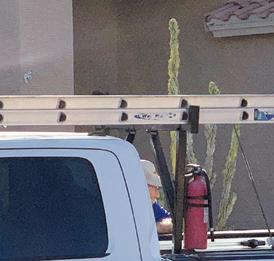













































SRP offers simple account management tools and tips that will save you time and money. Sign up for reminders about your energy usage, enroll in automatic payments or just pick the day you pay. SRP is here to help you simplify your account and your life.
Learn more at srp.net/account.
